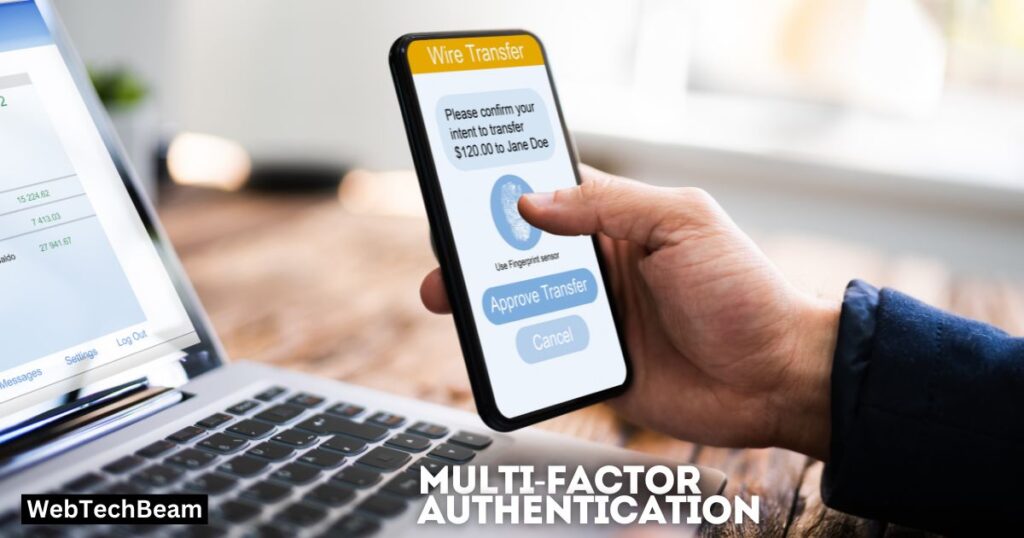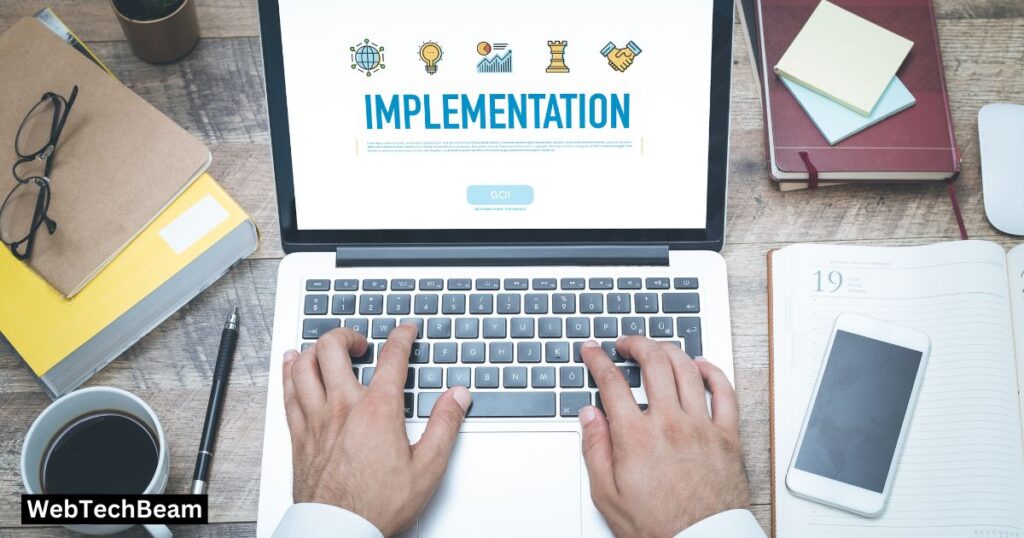Explore the Benefits of Single Sign-On and Multi-Factor Authentication for enhanced security and streamlined access in this insightful post. Because hacking and other associated cyber offenses are increasing, consumers and organizations are becoming increasingly concerned about user accounts and other personal data security. SSO and MFA are two of the greatest solutions in many recent discussions.
While they serve distinct purposes, together, they offer a robust framework for enhancing security and improving user experience. This blog will guide you on the benefits of Single Sign-On vs Multi-Factor Authentication. Let’s explore together.
What is Single Sign-On (SSO)
Single sign-on (SSO) is a convenient authentication technique that allows consumers to access multiple applications using a single set of login credentials. Instead of having to remember multiple usernames and passwords for different forums and services, SSO offers the ability to log in once and quickly access numerous applications. This technique is widely used in business and enterprise contexts, as well as with various web applications. By streamlining the user management process, SSO helps improve the overall user experience.
Key Benefits of SSO
Below, we will discuss several advantages of SSO.
Improved User Experience
Due to the difficulty of remembering multiple passwords, people end up wasting significant time. However, with Single Sign-On (SSO), there is no longer a need to remember numerous complex account details. This streamlined access not only enhances user satisfaction but also promotes consistent application usage.
Increased Productivity
Consumers will experience a significant decrease in the time they spend on adapting to password and login process changes. Consequently, employees will be able to concentrate on their tasks as frequent log-in procedures tend to be time-consuming.
Centralized Management
SSO simplifies the task of managing user accounts for IT administrators by providing a centralized approach. It streamlines processes for adding, removing, or updating user access, thereby enhancing security protocols.
Reduced Password Fatigue
Password fatigue refers to the feeling of exhaustion that users experience when they have to remember multiple passwords. Single Sign-On (SSO) resolves this issue by reducing the need for password resets and the accompanying support tickets.
Enhanced Security
Although it may seem contradictory, the effective implementation of Single Sign-On (SSO) can actually improve security. This is because it encourages users to create more complex passwords for their accounts, as they are not required to simplify them for easier memorization.
What is Multi-Factor Authentication (MFA)

MFA, also known as multi-factor authentication, is a security measure that mandates the submission of two or more validation factors by the user in order to gain access to an account or application. These factors may include something known to the user, like a password, something possessed by the user, such as a smartphone or hardware token, or even biometric features like a fingerprint. By requiring multiple factors, MFA enhances the overall security level by adding an extra layer of protection.
Key Benefits of MFA
These are the key advantages of utilizing multifactor authentication.
Enhanced Security
By demanding multiple forms of verification, MFA enhances security. It ensures that unauthorized access is prevented even if a password is compromised, thanks to the inclusion of extra verification factors.
Reduction in Fraudulent Access
Implementing multi-factor authentication (MFA) decreases the chances of phishing attacks and credential theft by rendering it significantly more difficult for attackers to succeed. The inclusion of multiple verification factors poses a greater challenge than solely relying on a password.
Compliance with Regulations
Implementing MFA can assist organizations in meeting compliance requirements, thus preventing potential fines and legal complications, as numerous industries are obligated to adhere to stringent security measures.
User Trust
Knowing that there are extra security measures in place brings a sense of relief to users who are knowledgeable about cybersecurity threats.
Flexibility in Authentication Methods
MFA offers a range of verification options, including SMS codes and authenticator apps. Depending on your specific user needs, you have the flexibility to choose the most suitable method for your business.
The Power of SSO and MFA Combined
When combined, SSO and MFA offer a robust security solution. You get both convenience and security. Integrating MFA and SSO allows companies to minimize the chance of unauthorized access and offer the convenience of SSO logins.
- SSO and MFA combine to form a strong security barrier that poses significant challenges to potential intruders attempting unauthorized access.
- SSO speeds up the login process, while MFA enhances security without compromising convenience.
- Multiple industries and regulatory bodies establish compliance requirements that both SSO and MFA must conform to.
- IT management can be a cost and time-saving measure for organizations.
How To Implement SSO and MFA

This is a simple and straightforward tutorial for effortlessly incorporating SSO and MFA.
Step 1: Take Your Organizational Needs Into Consideration
Please identify how your organization will meet its needs and specify which applications require Single Sign-On (SSO) and Multi-Factor Authentication (MFA). Additionally, it is crucial to consider the context of the current user base and their requirements when implementing these security measures.
Step 2: Choose The Right Solutions
In the current market, there are various options available for Single Sign-On (SSO) and Multi-Factor Authentication (MFA) solutions, cloud-based services, or direct integration on the premise. It is important to assess and choose the ones that align with your organization’s requirements and financial capabilities.
Step 3: User Education
In order to ensure the successful implementation of SSO and MFA, it is crucial to provide education and support to users. Without proper knowledge, employees may face obstacles in utilizing these systems effectively. Therefore, offering training on the importance and usage of SSO and MFA will simplify the process.
Step 4: Pilot Testing
To begin testing SSO and MFA across the entire organization, it is advisable to start with a smaller group of individuals as a pilot or sample group. This approach will help identify any potential challenges before they escalate into major issues when implementing the project on a larger scale.
Step 5: Continuous Monitoring & Improvement
Security is an ongoing process that requires sustained effort. It entails regularly evaluating and enhancing security measures, remaining constantly vigilant to identify suspicious activities, and consistently gathering user feedback to improve system performance.
Challenges of Implementing SSO & MFA
While there are numerous advantages associated with SSO and MFA, it is crucial to acknowledge the existence of significant challenges as well.
- Certain individuals might be resistant to change, particularly if they are used to traditional login methods. It may be necessary to address their concerns and emphasize the advantages of adopting new methods.
- Integrating SSO and MFA with existing systems can be a challenging task as it requires ensuring compatibility across all applications and services.
- Depending on the solution you choose, there will be costs involved in implementing and maintaining it. It is important to consider and allocate a budget for these expenses.
- Although SSO enhances security, it may also introduce a single point of failure. Therefore, it is important to verify the security and monitoring of your company’s SSO system.
Conclusion
MFA and SSO are effective tools businesses may use to shield people from cybersecurity threats. When combined, they offer simplified login processes and enhanced security. Suppose you want to resist the changing technology dynamics and win the trust of your users. In that case, you must implement strategies such as SSO and MFA.
FAQs
What is Single Sign-On (SSO)?
Single Sign-On (SSO) simplifies access management in enterprise environments by enabling users to access multiple applications with just one set of login credentials. This authentication process eliminates the hassle of logging in multiple times, improving user experience and boosting productivity.
How does Multi-Factor Authentication (MFA) enhance security?
Multi-factor authentication (MFA) strengthens security measures by mandating users to provide at least two verification forms prior to gaining access to an account. These verification factors commonly consist of a knowledge factor (e.g., a password), a possession factor (such as a smartphone or security token), and an inherent factor (like biometric verification such as fingerprint or facial recognition).
What are the benefits of SSO and MFA?
By integrating Single Sign-On (SSO) with Multi-Factor Authentication (MFA), users can benefit from enhanced security measures and an improved login experience. SSO streamlines access to various applications by requiring only one set of login credentials. On the other hand, MFA adds an extra layer of security by prompting users to complete additional verification steps, such as entering a code received on their mobile device. The combination of SSO and MFA ensures heightened account security while also providing the convenience of simplified login processes.
What is the benefit of single sign-on?
SSO, also known as Single Sign-On, is advantageous as it enhances accessibility and expedites the login process. By utilizing SSO, you need only remember a single set of login credentials for numerous applications or websites. Consequently, this reduces the time spent on signing in and minimizes the need to manage multiple passwords. Ultimately, SSO simplifies the use of technology, making it more efficient.
What is the difference between 2FA and single sign-on?
Two-factor authentication (2FA) and Single Sign-On (SSO) have distinct functions. While 2FA enhances security by demanding two forms of verification, such as a password and a phone code, SSO streamlines access by enabling the use of a single set of login credentials for multiple applications or websites. The primary objective of 2FA is to heighten security measures, whereas SSO primarily aims to simplify the login process.
What is the difference between single authentication and multi authentication?
Single authentication involves using just one piece of information, such as a password, to log into a system. On the other hand, multi-authentication, also known as Multi-Factor Authentication (MFA), necessitates multiple forms of verification. For instance, along with inputting your password, you may be required to enter a code sent to your mobile device or provide a fingerprint. Multi-authentication enhances security by adding layers of complexity, thus making it more challenging for unauthorized individuals to gain access to your accounts.
Can SSO and MFA be used together?
Combining SSO and MFA can enhance both convenience and security. SSO streamlines the login process by enabling access to multiple systems using a single set of credentials. Simultaneously, MFA strengthens security measures by demanding extra verification, ensuring the protection of sensitive information.
What are common challenges in implementing SSO and MFA?
There are several challenges that can arise when implementing SSO and MFA. These include the high costs associated with setting them up, the need for IT resources to manage them, and the potential resistance from users who are used to traditional login methods. Moreover, integrating these systems with existing infrastructure can be complex and may pose a hurdle for certain organizations.
How can organizations overcome user resistance to adopting SSO and MFA?
In order to address user resistance, organizations have the option to offer thorough training and support, showcasing the advantages of Single Sign-On (SSO) and Multi-Factor Authentication (MFA). By clearly communicating how these systems enhance security and streamline access, organizations can facilitate a smoother transition. Additionally, incremental implementation and fostering a culture focused on security can effectively promote adoption.
The Benefits of Single Sign-On and Multi-Factor Authentication (webtechbeam.com)

